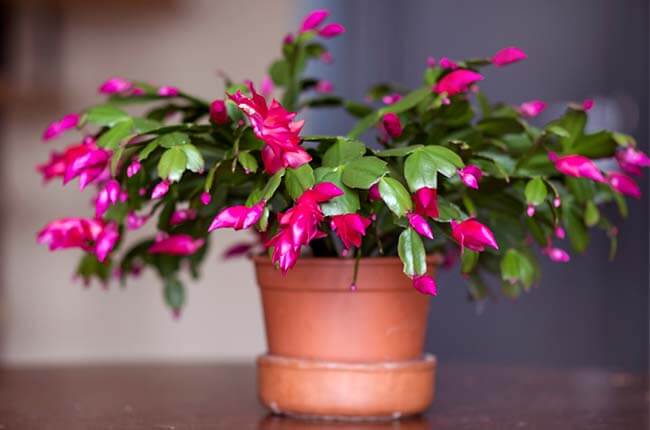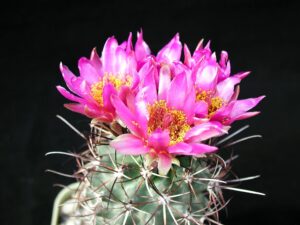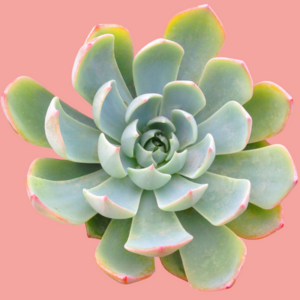In the enchanting world of houseplants, the Christmas cactus stands out, both for its vibrant blooms and its propensity to surprise. While these plants are traditionally associated with the holiday season, many enthusiasts may find themselves bewildered when their Christmas cactus begins to bloom in February, far removed from the festive spirit of December. This phenomenon, while perplexing, opens a fascinating dialogue about the lifecycle and care of these resilient flora.
Understanding the blooming cycle of a Christmas cactus requires a closer look at the environmental factors that influence its growth. This intriguing plant, native to the cloud forests of Brazil, has adapted to conditions that differ significantly from those of typical cacti. Unlike their desert-dwelling relatives, Christmas cacti thrive in humid conditions and dappled light. This adaptability can lead to unexpected blooming cycles, prompting curiosity among avid gardeners and houseplant lovers alike.
So, why is your Christmas cactus blooming out of season? What could be the compelling reasons behind this unanticipated display of color? Let’s delve into the myriad factors that may contribute to this delightful enigma.
The Role of Temperature in Blooming Patterns
Temperature plays a pivotal role in influencing the flowering cycle of the Christmas cactus. Typically, these plants require a specific range of cooler temperatures to trigger budding. During the winter months, many homeowners maintain indoor environments that can be substantially warmer than the natural habitat of the Christmas cactus. Utilizing a cooler room or enabling fluctuations in temperature can help simulate those ideal conditions, thereby stimulating blooming.
In February, if the ambient temperature suddenly dips, the Christmas cactus may interpret this as a cue to bloom, believing the winter season has arrived. Additionally, prolonged exposure to cooler temperatures during the preceding months, perhaps due to an unusually cold winter, can create a fertile environment for unexpected blooms.
Photoperiod: The Light Factor
While temperature is critical, the duration and quality of light also significantly influence blooming. The Christmas cactus requires darkness for about 14 hours a day to encourage bud formation. If your plant has been exposed to bright light or longer daylight hours, especially in an artificial indoor setting, it may disrupt the natural rhythm.
Artificial lighting can lead to confusion for the plant, impacting its ability to detect seasonal shifts. Therefore, if your Christmas cactus begins to bloom in February, it could be reacting to the lengthening days at that time of year. Ensuring periods of uninterrupted darkness can create the right balance for bud development.
Watering Practices: Overwatering and Underwatering Effects
Caring for a Christmas cactus includes the intricacies of watering. This species is particularly sensitive to moisture levels in the soil. Overwatering can lead to root rot, while underwatering can stress the plant, both of which can contribute to unexpected blooming. During the winter months, it is crucial to minimize watering frequency.
If the plant has been watered too frequently or too infrequently, its stress response may manifest through abnormal blooming patterns. The physiological state of the plant can dictate its blooming habits, leading to surprises during the off-season. Balancing moisture levels is essential for maintaining overall plant health, influencing its lifecycle.
Stress as a Catalyst
Plants often exhibit surprising behaviors in response to stressors, and the Christmas cactus is no exception. Factors such as repotting, harsh handling, or pest infestation can induce anxiety in the plant, triggering unexpected blooms.
In these instances, the blooming may not merely be a sign of health but a survival mechanism, where the plant attempts to propagate before facing potential decline. This remarkable resilience can serve as a poignant reminder of nature’s tenacity, inviting a more profound appreciation of these unique plants.
Environmental Conditions: Embracing Humidity
Humidity is another critical factor in the blooming health of a Christmas cactus. Unlike typical desert cacti, they thrive in higher humidity levels reminiscent of their native habitats. During February, household humidity levels can fluctuate, especially with the use of heating systems.
If your home is on the drier side, this may affect the plant’s ability to bloom. Conversely, if you have been actively maintaining a humid environment, your Christmas cactus may flourish, resulting in blooms despite the time of year. Understanding the delicate balance of humidity could be the key to fostering a healthy cactus.
The Significance of Proper Fertilization
Nutrient supply also comes into play when considering blooming patterns. Fertilization during the growing season, typically late spring to early fall, provides essential nutrients that support bud formation. Conversely, fertilizing in the fall can lead to excessive vegetative growth at the expense of blooming.
If blooming occurs in February, this could signify either an overabundance of nutrients during the previous growing season or the plant’s underlying resilience to navigate periods of nutrient stress. Adequately managing fertilization schedules can enhance blooming cycles without disrupting the natural rhythm.
In conclusion, the unexpected blooms of a Christmas cactus in February can inspire homeowners to reconsider their care routines and environmental setups. By understanding the intricacies of temperature, light, watering, and humidity, as well as recognizing how stress and nutrient levels impact their health, plant enthusiasts can cultivate a deeper appreciation for their holiday flora. This exploration may lead to not just better gardening practices, but a profound connection to the cycle of nature itself.





Leave a Comment